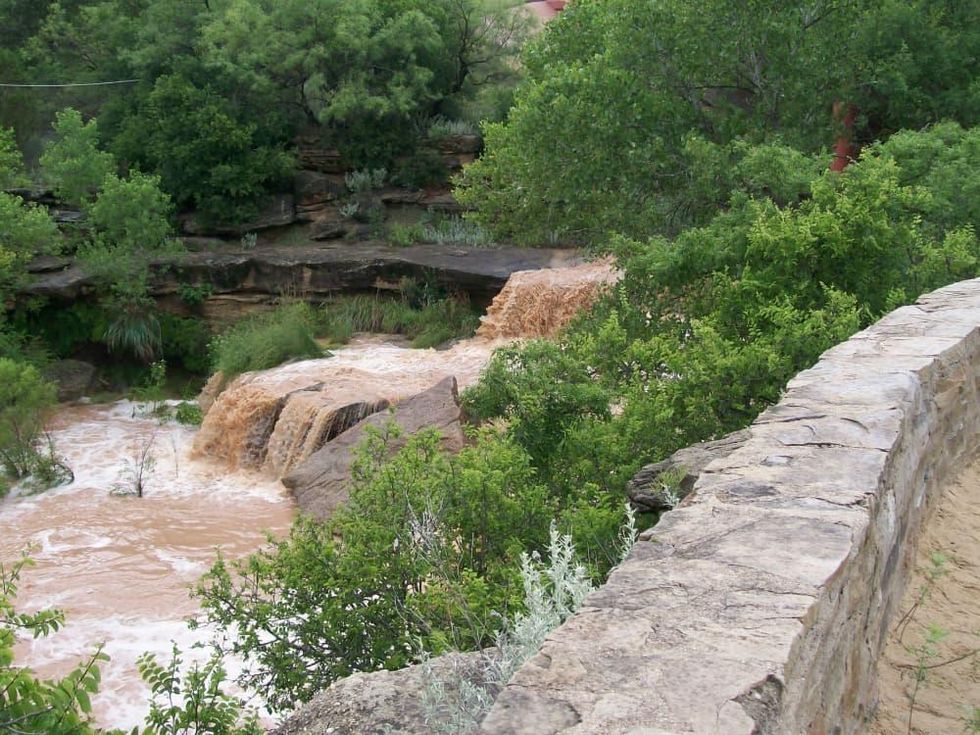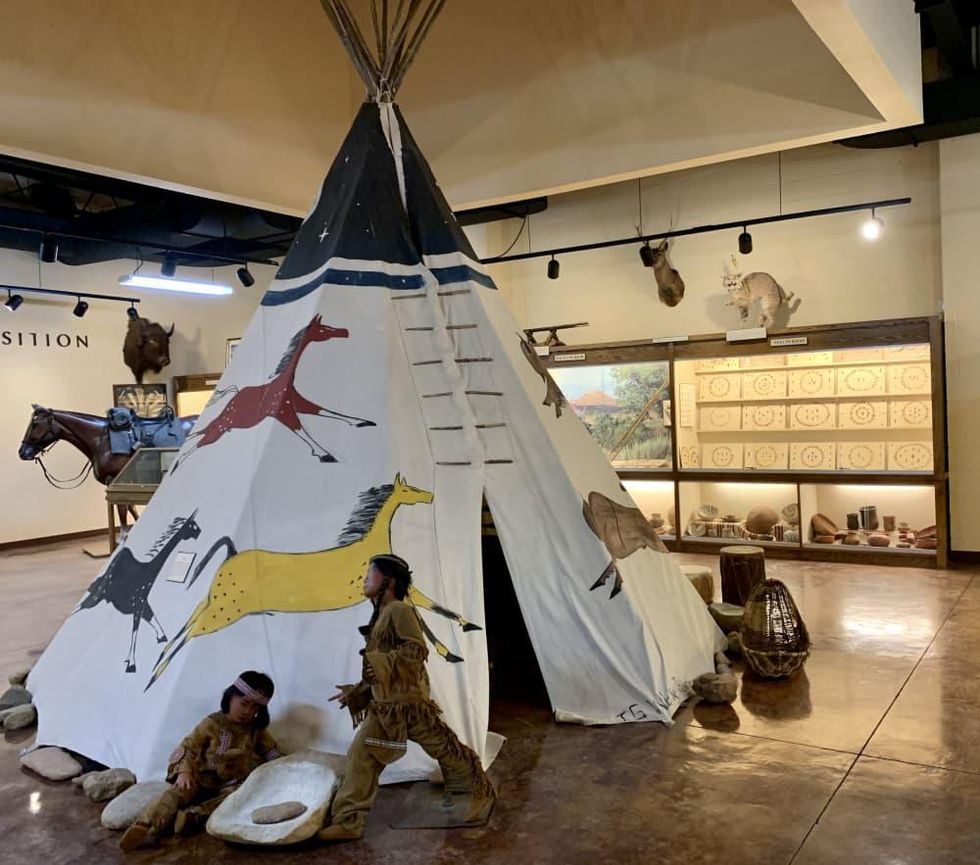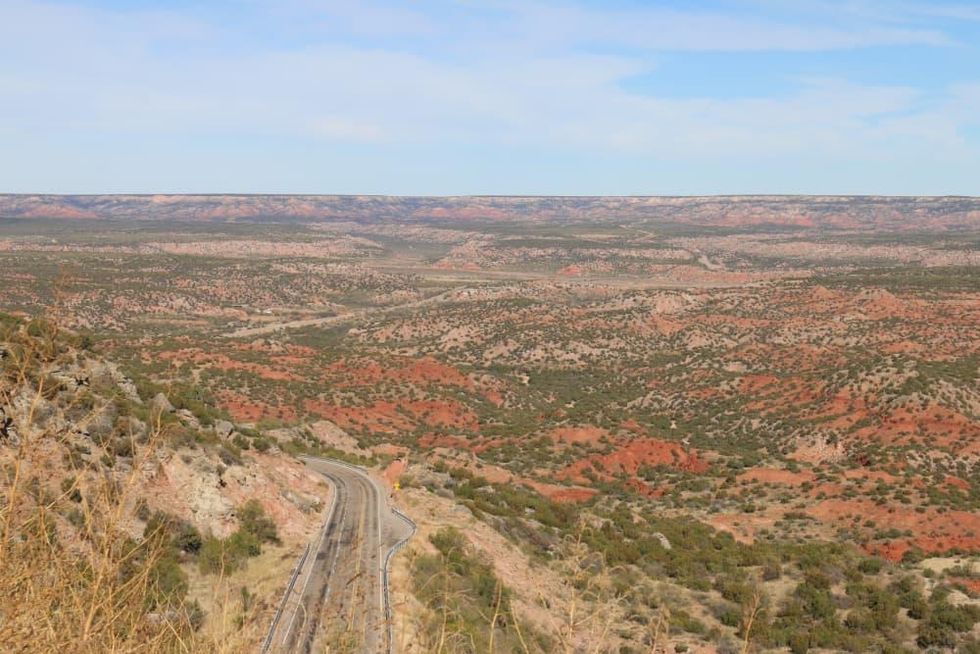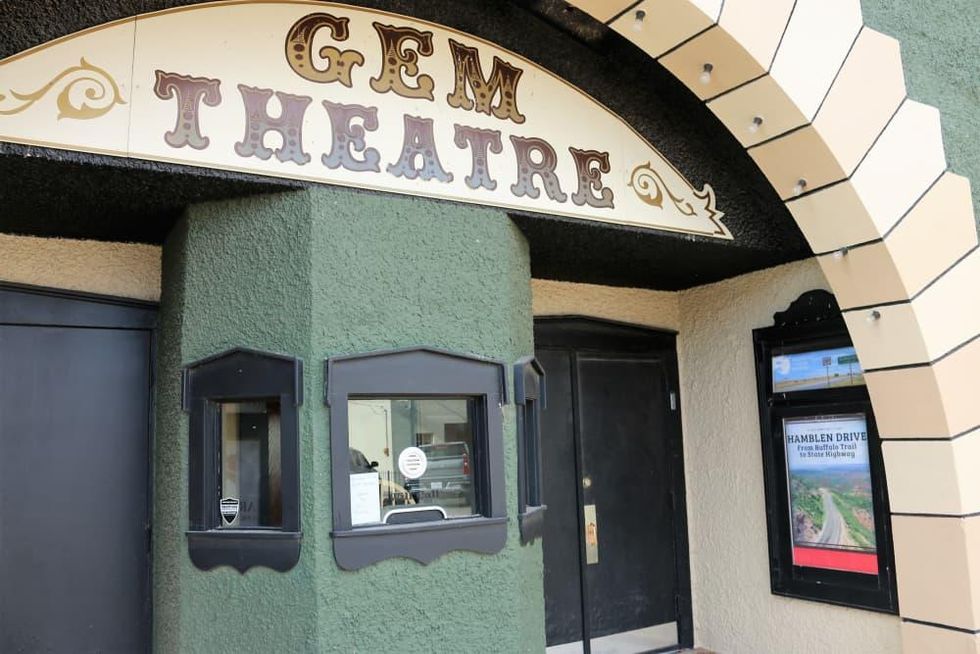On the Road
Stop along the Texas Plains Trail Region for stunning vistas and fascinating history

Covering nearly 50,000 square miles, the 52-county region of the Texas Plains Trail features acres of prairie mixed with the spectacular canyon vistas of the Panhandle.
The rugged beauty and shimmering sunsets of the area make it prime road-trip territory, with plenty of scenic spots to stop for a picnic and a bit of local history, as documented by the Texas Historical Commission.
Hamblen Drive Roadside Park Picnic Area
This scenic park in Claude — about 30 miles east of Amarillo — boasts incredible, 360-degree views of Palo Duro Canyon.
The park gets its name from Will H. Hamblen, who pioneered a crude road into the canyon along old Native American trails in the 1890s. It shortened settlers’ trips by 120 miles but was steep and dangerous. In 1928, a graded road was built.
While you’re in Claude, swing by the Armstrong County Museum, which has an impressive collection of artistic, cultural, and historical objects that recount the arrival of cowboys and trains, along with the establishment of the legendary JA Ranch. The items also document the time of the native people who once lived and hunted on the land.
Part of the museum includes the 1915 Gem Theatre, where you can see movie memorabilia as well as live performances by local and touring drama and musical troupes.
Silver Falls Park
With status as the largest roadside park in Texas, this Crosbyton destination features a backdrop of mesas and mesquites — and its namesake falls — that make it a great spot for hiking, backpacking, and picnicking.
Located 30 minutes east of Lubbock, the park been a stopping point for travelers since the 1800s. In 1935, the National Youth Association, which was part of President Roosevelt’s Work Project Administration, built the park’s stone facilities, the remains of which you can still see today.
Also in Crosbyton, history comes alive at the Crosby County Pioneer Memorial Museum, which includes an expansive collection of 45,000 artifacts including 23,000 pieces from Native Americans, a Plains Indian teepee, a dugout recreation, and a furnished replica of an 1877 rock house of the county’s first permanent settlers.
Dickens County Springs Park
Off the beaten path is this little oasis of a park, located at the head of a ravine near the edge of the Llano Estacado.
About two hours shy of Palo Duro Canyon, it's a great place to take a break on your way to the canyon and beyond. There's also plenty to explore across its 72 acres of diverse terrain, with a few dedicated picnic zones enclosed by a teepee and the shell of a chuckwagon replica, too.
The ancient cold-water springs have been a favored place since the earliest human occupation in the region, with many nomadic tribes having used the site and leaving an abundance of archeological evidence in their wake.
Dickens is also home to one of the 22-foot-tall steel arrows by artist Charles A. Smith that form the Quanah Parker Trail. This network of more than 70 arrows commemorate the sites where the Comanches, and their last chief Quanah Parker, hunted, traded, lived, traveled, and fought.
Discover more picnic-ready and history-laden spots in the fascinating Texas Plains Trail region here.
Silver Falls Park in Crosbyton is the largest roadside park in Texas — and a great spot for hiking, backpacking, and picnicking.





